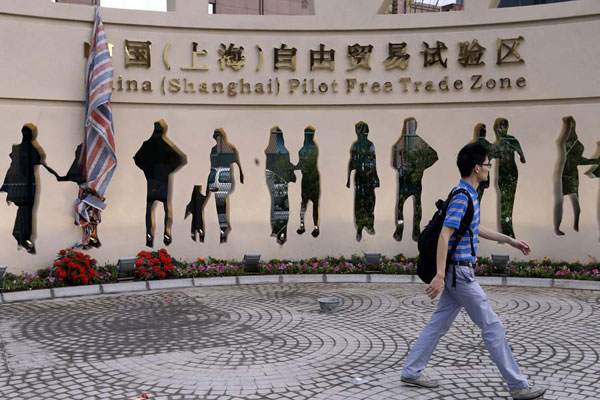Double down on opening-up
(China Daily) Updated: 2015-09-23 08:24
 |
|
The name plate of the China (Shanghai) Pilot Free Trade Zone on a gate of the Waigaoqiao free trade zone in Shanghai. [Zhao Yun / China Daily] |
The official statement, released on Monday, saying a negative list will be applied across the country in 2018, is a loud call for not only deepening reform at home but also welcoming foreign investors even as China itself is emerging as an important investor around the world.
The negative list, by identifying sectors and businesses that are off-limits for investment, will make it clear that the market will play a bigger role in allocating resources in the rest of the sectors, creating a law-based business environment and making the market more open.
This approach, piloted in the Shanghai (China) Free Trade Zone in 2013, can significantly reduce government intervention and give more freedom to the market.
It will hugely boost the country's efforts to encourage innovation and entrepreneurship, turning them into a new growth engine and subjecting State-owned enterprises to profound reforms so that they can stand fiercer competition.
By opening up its market wider to the outside world, China is set to further integrate into the world economy through trade and cross-border investment.
For instance, the Bilateral Investment Treaty talks that China and the US started in 2008 was meant to increase mutual investment between the world's two largest economies. It is hoped that China's promise to make a negative list applicable across the country will make the two countries agree to a treaty to facilitate and boost bilateral investment.
Given the fragile state of the world economy, the slowdown in China and the fiscal mess in the US, a step forward in cementing China-US investment ties is more than needed. By agreeing to further open up their markets to each other, the two countries should seize the chance to lead by example in fighting protectionism in various forms.











